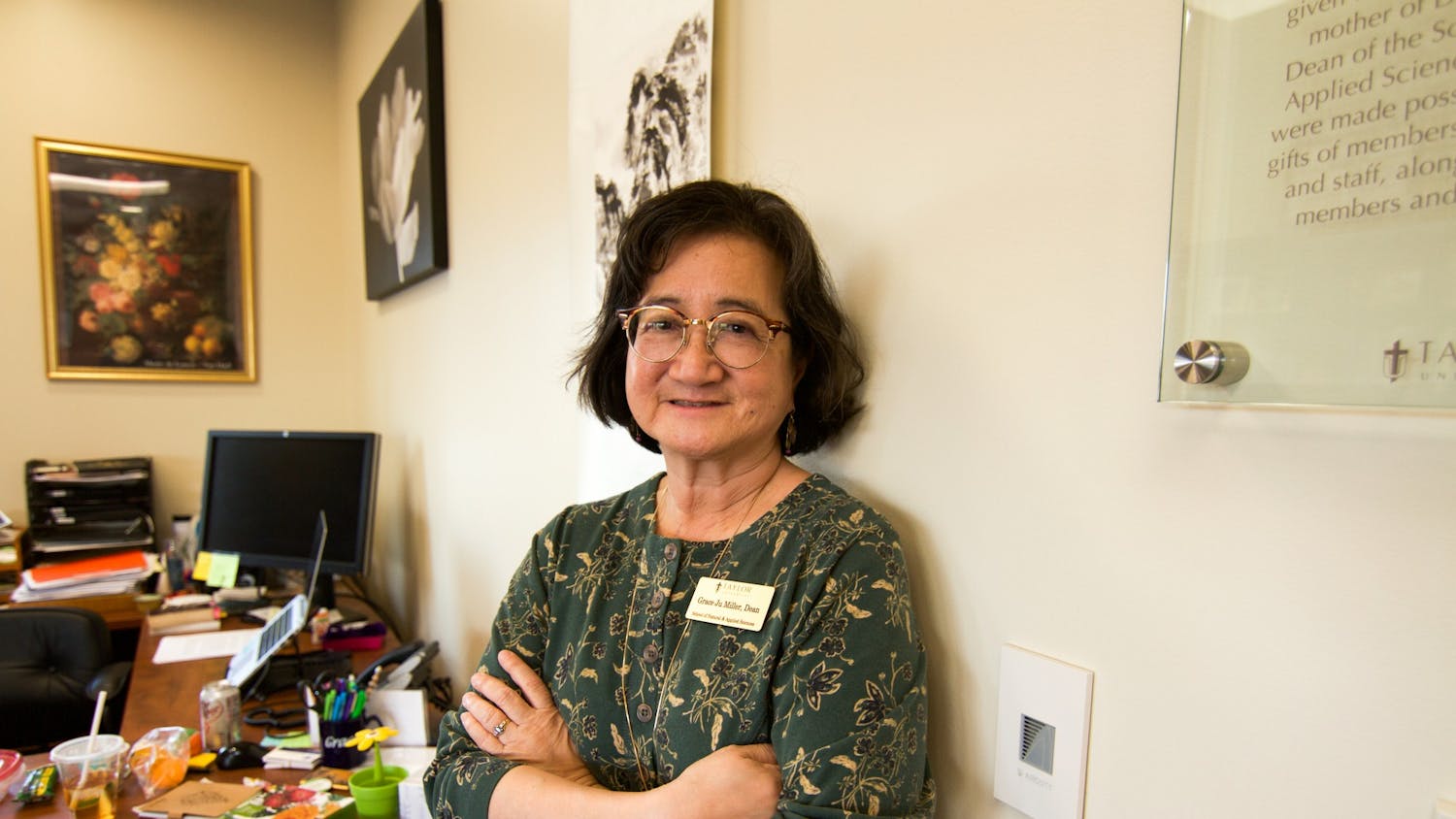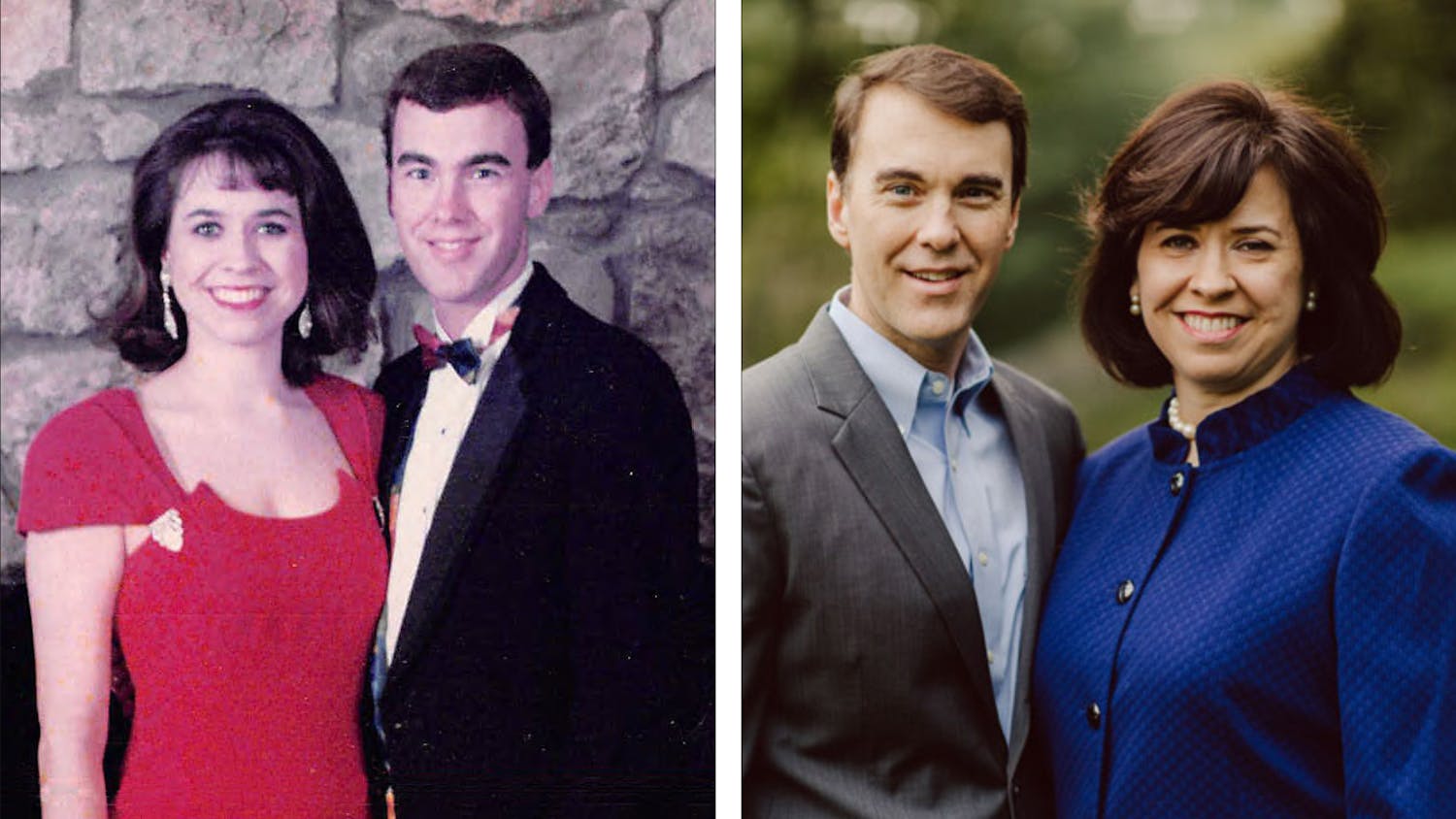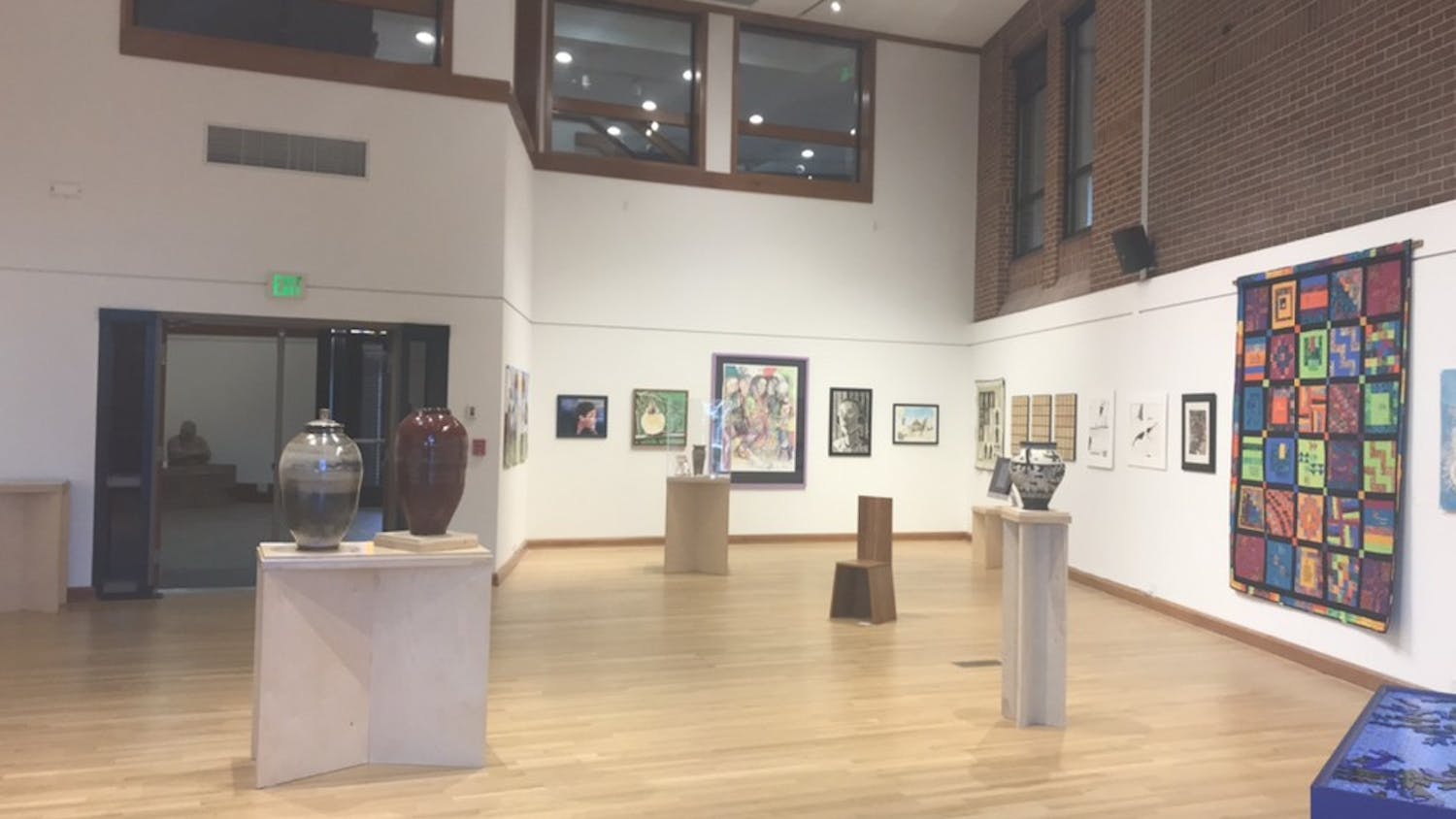Currently a professor of graphic design and chair of the Department of Art and Design at Samford University, Scott Fisk is a graphic designer, artist and educator whose work has been shown and recognized for its excellence around the world. Fisk was deployed as an army reserve photo-journalist and combat photographer tasked with documenting military history during the Iraq War; following his deployment, Fisk was awarded a Bronze Star for his heroic service. Samples of Fisk’s artwork are currently on display in the Metcalf Gallery, as a part of the Matter and Spirit exhibit exploring the overlap of faith and culture.
To see more of Fisk’s work, explore his personal website at http://scottfisk.com/graphic-design.
Would you mind telling us a bit about yourself and what you do?
“I spend a lot of my time — you know — doing my own professional work. I love photography. I love graphic design. I love art. I love technology. I put all those things together, and it’s great to be able to take what you do, love what you do, share it with students and try to really just change the world in a positive way. I think that’s my goal.”
What would be examples of objectives and military units that you’d follow (during your deployment)?
“One of our missions that we sort of fell in on … was the one that made me really nervous — partially because we were getting closer to the end of our deployment, which is always a really nervous time for everybody because you’re like, ‘I’ve made it this long; I really want to survive and make it to the end.’ And it was a New York National Guard unit that wanted to go and secure a power plant, because they had information; they had intel that it was occupied by people that were not supposed to be there. And at the time, it was the biggest — what’s it called — air assault mission that had happened since Vietnam, in 20 plus years. So they had well over 50 helicopters carrying different soldiers all at once at the same time in the middle of the night and dropping them on this power plant with the expectation of resistance … I’m out with my camera, with my Nikon, you know, doing my thing, wandering around thinking, ‘Hey, we’re safe; things are okay!’
And then I start walking over towards the Iraqi army unit, which is kind of by themselves, and I’m maybe a hundred yards away — maybe 75 yards away — and mortar shells start coming in, and they are hurt very badly, and a number of people died in that encounter. And if I had been a minute or two — just a minute earlier and been there, I would have been gone … Right before all of this, we were supposed to ride back with the general and he had already left and I was out shooting photos, so I missed my ride … And, you know, my commander and I — we end up helping carry out dead bodies on the helicopter; that was — that was (a) bad (mission).”
What did you find yourself most commonly taking pictures of when they were over there?
“Quite often I would just be a good listener and (people) would share their story and I would record it, you know, make notes, gather up all the materials, take photographs — and that’s what would get pushed along. But it was always action stuff. You know, if I had stayed at the headquarters like the higher-up people would have wanted, then we really wouldn’t have captured the story and we wouldn’t have completed our mission properly. So we did risk a lot going out and doing our job, but in the end, someone had to do it — because there weren’t very many of us there doing it. And that stuff — like, those stories, would just be gone if we hadn’t captured them.”
Do you think any of (what you experienced) bleeds over into the work you create?
“Yes, absolutely — let’s see. So, art can be a great therapy. And I think my military time affects me … How has it changed my art? When I first got back, I did a number of art pieces in a series or two that was really just kind of like art therapy — and it helped me through it, it helped me process it. And what I did was I took, I did all this research on my grandfather and what he went through (in the Vietnam War), and I have all these old beautiful, awesome photo books. And I scanned all that stuff in and I took all of my photographs and I scanned all that stuff in, and I created a collage and kind of put it all together. And some of it was like old emails that I sent like family members and loved ones — and then some of it was letters that my grandfather did the same thing with. So I turned that into an art series, which helped me sort of process it and, you know, think through it and deal with it a little bit. I think art can be really good for processing things.”
Talk about your faith a little bit when you were (deployed).
“You know, for the first few months, I’m like, ‘Nothing’s going to happen, you know, I’m young, I’m indestructible.’ … But when you realize that you could drive somewhere and get blown up and there’s nothing at all that you can do about it, it really forces you to kind of look inward and look at your relationship with God. You want to make sure that you’re in a good place in case something happens.
And that really prompted me to just be very gracious of the time that I did have — you know, the phone calls that I had with family, the relationships that I (had); and it forced me to make sure that I was ready to take that next step if necessary … The only way that I got through that was through my faith, my belief that God would protect me and get me through to the end. And He did; and there were definitely some close calls, but you know, in the end, I believe prayer is what allowed us to survive — without question.”
You said you’re a graphic designer above everything else: what about graphic design really captures your attention?
“I think a big problem today in general is just (that) people feel overwhelmed. You wake up in the morning, you check your phone, you’ve got Instagram, you’ve got TikTok: especially people y’all’s age. And that’s just constant information overload. I mean, there’s just so much stuff being thrown at y’all — so my job, as a graphic designer, is to sort of try to kind of clarify things, simplify things; streamline information so maybe life is a little bit less overwhelming … When I’m working on bigger projects, that’s what’s going through my head at its core. I’m trying to sort of improve people’s experiences when they interact with things: whatever those things are. ‘Cause, you know, in the end I’m a maker — I like making things.”
How did you go about developing your own unique style as a graphic designer? What did that process look like?
“At the most root level, I was born in Illinois; I spent up to my teen years in Iowa — and when I really think back about those aesthetics, what makes my aesthetics different, it’s what I was exposed to as a kid; it’s growing up on a farm. And this is stuff I never talk about — but, it’s machinery; you know, I was on a combine, my parents owned a farm when I was a kid; it’s seeing water towers, and I think that is subtly in a lot of my work. You know, even the work that’s on display here right now in the gallery. Some of it has a little bit of that industrial sort of vibe, which at its core root, comes from growing up on a farm in Iowa and Illinois.”
Can you talk a little bit more about this most recent piece of art that you’ve participated in (the Matter and Spirit exhibit)? What has it been like to kind of collaboratively work on this with other people?
“From the get-go, what I really loved about this project was the faith component: the fact that we were going to be able to talk about our beliefs, we were going to be able to talk about God, we were going to be able to talk about worship with people from another culture that just see things so differently than what we’re used to. And we did all of those things. And we got to talk a lot about our beliefs — we got to talk about, you know, what influenced us; we got to talk about our art and how all of those things overlap.”
Are you able to share your faith openly in your artwork frequently, or is this a special opportunity?
“I think, you know, often when I make my art it’s something personal — it’s something that is, you know, part of me; and since my faith is always a part of me … Man was made in the image of God, and God was the most wonderful Creator of the heavens and the earth and beautiful things — and that makes Him the Master Creator, right? And we were made in His image, so you know, to me, us being creative is just us doing what God did when He made us and made this wonderful world that we live in. So, sort of using that rationale, I think God is really in everything that I make; but definitely focusing on that day in and day out — and talking about it in workshop settings … (those of us working on the Matter and Spirit exhibit) would go to all these different experiences and then we’d talk about it and process it and do workshops and learn about their history — I think that really forced me to sort of dig a little deeper with my art.
I haven’t talked about this yet, but the work that’s up there specifically is augmented reality work; so you can see the work for what it is, and it does have a Chinese sort of influence to it; you can also hold your camera up and the work comes to life and has different things happen — different meaning. And conceptually to me, that is sort of like there’s one level of information you get to sort of see and consume when you’re (in China): the sort of superficial level — you’re the tourist, you see all these neat things, you hear things in a normal tone. But then you have this undercurrent of information, this undercurrent of things happening, people talking that maybe is a little more unfiltered: and that’s the augmented reality part of my project.”




